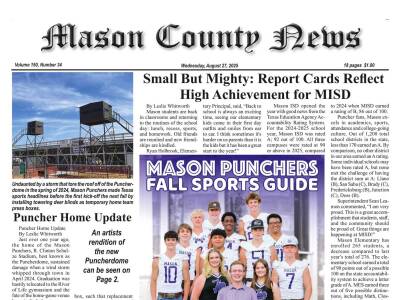Several years ago we installed a recycling “creek” in our backyard. At the low end we dug a hole big enough to hold a 10-15 gallon rubber “tub”. Up the slight incline we dug a shallow trench and lined it with plastic which was covered with rocks and gravel. At the upper end we placed a large rock over a wide pool. A submersible pond pump was placed in the tub and tubing was run up to the top of the large rock.
The pump then pumps water over the large rock, which then falls into a pool and runs down the “creek” back into a filter in the tub. The creek is only about 10 feet long and less than 1 inch deep. The tub is covered with large flat rocks so that only the upstream part of the creek is available to birds and most animals.
This “water feature” was installed because we live about a half mile from the nearest permanent water, and we wanted to not only provide the birds and small animals with a local water source, but also to allow us to enjoy watching the wildlife attracted to the water. We certainly accomplished both objectives.
Our permanent resident birds include cardinals, titmice, chickadees, house finches, lesser goldfinches, scrub jays and woodpeckers – all of which make frequent use of the creek on a daily basis, both for drinking as well as for bathing. Seasonal or less frequent visitors include various sparrows, finches, flycatchers, summer tanagers, painted buntings, robins, cedar waxwings, roadrunners, American goldfinches and hummingbirds.
We had a turkey nest in the front yard one year and she made daily visits to the water in the backyard, and individual turkeys as well as small groups will sometimes fly into the yard looking for food, but always stopping at the creek as well.
Water attracts birds which are not attracted to seed feeders so you see species you might not see without water. You might think that hummingbirds would not need to drink, given their liquid diet, but it is amazing how often the hummingbirds like to bathe in the ¼ inch deep water running over the rock.
Our feathered friends are not the only critters that like the creek. The resident squirrels stop at the creek at what seems to be several times a day (if you have ever tasted the tannin in an acorn, you would probably want a drink too!) We also occasionally had a visit by a cottontail.
We have frequent visits by skunks and raccoons and other small mammals, usually in the evening, but we probably only see a small fraction of the visits during the night.
Two of the most fascinating animals to use the creek are frogs and toads. We have had several occasions when we had a collection of several Leopard Frogs living in and around the tub and under the rocks. As I said above, we are over a half mile from permanent water, so it is amazing and somewhat mysterious as to where they came from and how these animals got here. We can almost always find tadpoles in the tub or the pool of water at the top of the creek, so our rock is obviously suitable to the frogs as permanent residents and they frequently call to let us know they are still there.
We also have had at least two Gulf Coast Toads. These animals are not always seen around the water, but also in flowerbeds and nursery pots where the vegetation and soil is usually moist.
Both frogs and toads lay eggs in water which hatch into tadpoles and then undergo metamorphosis to adult animals, so the water in the tub and the pool at the top of the creek would be essential to their reproduction.
A question I have had is what is the difference between a frog and a toad? Here, apparently, is the answer: Frogs are slim and fast, toads are fat and slow. Frog skin is usually smooth and toads have “warts”. Frogs usually live in or near water, toads can live in drier habitats. Both animals can burrow into the mud and go into a state of hibernation and survive for long periods of time.
If you like to watch wildlife, you should have some form of permanent, shallow, moving water. If you build it, they will come!
Come by Riverside on Fridays from 10 to 12 and let’s talk.
Until next time…
Jim Stanley is a Texas Master Naturalist and the author of the books “Hill Country Ecology,” “Hill Country Landowner’s Guide” and “A Beginner’s Handbook for Rural Texas Landowners.” He can be reached at [email protected]. Previous columns can be seen at www.hillcountrynaturalist.org .


